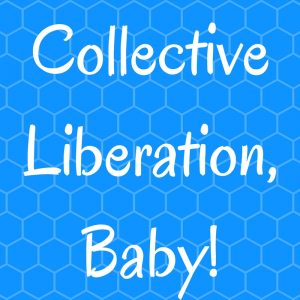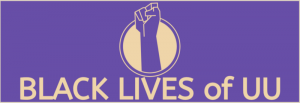I never met Margaret Maurer, founding member of this congregation. She died in 2011 at the age of 101. Despite having never met her, I have benefitted – we all have — from her legacy.

Thanks to an incredibly generous bequest she made upon her death, The Unitarian Society has a solid endowment. It is thanks to her that we have new stairways (built last year) that bring folks from the parking lot up the hill. It is thanks to her that sometime in the (near?) future, we will have new flooring in the lobby and new doors more appropriate to a worship setting than our current accordion doors. We also have, thanks to Margaret, a history of social justice at this congregation, from its inception in the mid-fifties, up until 1980, when the document was written.
This morning, I want to share with you some modern history of our faith movement, how it came to be embodied in this congregation and how it is very much alive and electric today. Originally I had planned to talk about the rise of authoritarianism; instead the sermon today will still be about the shifting grounds beneath us, but from a different, related angle: the systems that center the white experience, building walls that preclude full involvement by people of color, as well as about how we must dismantle it – continuing to try, falling short, and hearing the call to try again.
~~
If you look around the room at the faces of your fellow congregants you will notice, or notice for the thousandth time, that we are a congregation that is majority white with some faces of color. Though Unitarian Universalism comes from a historically segregated tradition, we state over and over again that we are committed to ending oppressions in general, and eliminating racism in particular. How do these two realities co-exist?
Over and over, we fall short of living our faith out loud. We showed this yet again with the recent hiring of the Regional Lead in the Southern Region of our Association. There were two finalists for the position, both of whom have long pedigrees of serving our faith movement, including both until recently, serving on the UUA’s — that’s the Unitarian Universalist Association of Congregation’s board. The UUA hired the white male minister who doesn’t live in the geographical region and does not plan to move there over the candidate of color, a religious educator, who lives and serves in the region, who was told she was qualified for the position, but that they were choosing based on “a good fit for the team.”
From listening to my colleagues and friends of color, I have learned that phrase, “right fit for the team,” is code for preferring to prioritize, or center, those skills, styles, and approaches that typify white culture, and often white male culture, and therefore white candidates. It’s a form of – and I’m going to use a strong phrase here, so notice your own reaction to it – it’s a form of white supremacy. Not the cross-burning KKK kind, to be sure, but a dynamic that perpetuates white and male culture as the measurement by which we measure preferred leadership.
White supremacy. For some, it is an immediate reason to defend against any other information that comes. If that is your reaction, I ask you to notice, breathe, and set it aside. Particularly for white people, our tendency to react to criticisms about race, criticisms about race from people of color, bring a defensive reaction.
I ask you to listen to this definition, offered by Kenny Wiley, one of our current, most engaged, powerful religious leaders of color. He wrote
Why “white supremacy” as the term here? It conjures up images of hoods and mobs. Here, we mean: “White supremacy as a set of institutional assumptions and practices, often operating unconsciously, that tend to benefit white people and exclude people of color.” (FB post, March 29, 2017)
You don’t have to be white to be defensive — as the letter from the recently-resigned-as-president-of-the-UUA Reverend Peter Morales, shows (he’s Latino). But the white version, or the male version, or the heterosexual version, when it comes to having persistent patterns of oppression pointed out to us, are particularly problematic. It’s like having someone helpfully raise a mirror to our face to show us the dirt there, and our responding with denial, or hurt feelings, or blaming the messenger, or an aggressive manner, rather than saying, “Yep, there’s that dirt again. Thought I took care of that. Thank you for telling me. Let’s clean it off together.”
On a side note, if I am ever talking to you, and I have something between my teeth, like broccoli: please tell me. Save me further embarrassment. After an initial moment of awkwardness, I will thank you.
On a real note, if you see a pattern emerging that concerns you as racist, please tell me, please tell leadership, what you are seeing. Help me, help us, see it too.
So here are some key facts of the last few weeks in the UU Universe:
- In response to that hiring decision for the Southern Regional Lead, some UUs of color were clear-sighted and called for all our attention to hiring patterns at the UUA as one of many indications that racial justice is not alive and well despite our declarations otherwise. As Christina Rivera wrote,
- While still president, Morales responded in a letter that used the word, “hysteria” to describe those expressing criticism of the patterns and systems in the UUA. That did not go over well.
- Letters and public statements – from ministers, from white religious leaders, from ministers of color, from the organization Black Lives of UU which called this a “moment of crisis for our faith;” as well as from individuals who care about the future of our faith movement, from all three of the presidential candidates – came along at the rapid pace that social media allows for quick, wide dissemination.
- The UU World gave a summary online last Monday – it was linked in the email I sent to the congregation on Friday night.
And so what? What to do with all this? What does it mean for our lives here at TUS? What can we do about any of this? That is, if we are at all interested?
[Sadly, these next three paragraphs did not make it into the spoken sermon, but I include it here because it’s important.] The late 1960s was a racially charged time in our nation’s history, much like today with attention to concerns about racial justice as a dynamic topic within our faith movement. Two groups emerged on the national UU scene. One focused on integration as a strategy; the other group, called the “Black Affairs Council” or “BAC,” focused on Black empowerment.
The two groups and the wider UUA leadership imploded with lasting injury to our denomination. Much has been written on what is called “the Black Empowerment Controversy,” but one of the long-term legacies was the loss of a significant number of UUs of color, especially, but not only, Black UUs. They left with a sense of betrayal by their faith. Though Unitarian Universalism has always been a historically segregated religion (as so many Christian denominations were and are), there was a time when we were not as white as we currently are.
Our written social justice history documents efforts over the first three and a half decades of this congregation. When she is relating the situation here at TUS during this larger controversy, she wrote about TUS’ initial support of BAC, then an active vote to suspend support. Out of this, the history documents reports, “With great regret, we lost some of our Black members at this time who felt we were giving inadequate support…”. The report goes on to say that after a decade of engagement on racial justice issues, the Society did not engage any further major efforts in this area until seven years passed. This was the early 1970s, folks, when this was very much on our nation’s heart and mind. But not here. This happened here and it impacts our experience of Unitarian Universalism and this Society to this day. It impacts who we see here. Given this moment of crisis in our faith movement, what will we choose today?
 Gini von Courter, former UUA trustee Moderator, recently wrote this:
Gini von Courter, former UUA trustee Moderator, recently wrote this:
The UUA is drowning in a sea of whiteness, and we don’t even notice. This is an attribute of white supremacy culture. (Facebook post, March 29, 2017)
More often than I’d like to admit: that’s me. Not noticing.
A few months after I began serving here, I mentioned to a friend that in the first month I was here, that I was part of hiring three new staff (of a staff of three, if you don’t count me). My friend spoke of how I must have used my anti-racist values to impact that process. It was then, and only then, that I realized the obvious: we are a staff of white people. Not the Montessori School, but the staff of the congregation: we are white. And we can say, like the comic Seinfeld used to say, “not that there’s anything wrong with that” but I have to acknowledge, I didn’t see it. Not at first.
And if I didn’t see, then how could I, as Head of Staff, as Minister here, pay attention to how that impacts our collective lives – how that continues a way of seeing things that perpetuates white-centricity – white supremacy? How that impacts people of color when they worship here, whether just once and do not return or those who choose this as their spiritual home?
So I think, given that we will be hiring a new Music Director, we might want to think about how we can learn from the mirror being held up for us as a denomination and us as a congregation.
As Adam Dyer, the author of our earlier reading today, wrote,
Or as Rev. Erika Hewitt – who will be giving the sermon at our installation – wrote:
“When our congregations, our leaders, and our governance structures reveal themselves as riddled with walls that keep people of color away from power and authority, our agency as white people arises from the humility to understand their truth as our own, and to make all necessary changes to live” our values out loud. (Pastoral letter, published on FB, March 31, 2017)
So what can we do? How can we build a new way? That’s the hashtag that is being used for all these calls for justice: #BuildingNewWay, which is a hymn in the teal hymnal: We are building a new way / getting stronger everyday / we are building a new way. It just so happens to be one of the hymns we will be singing at our installation. Good timing.
We can ask the TUS delegates to General Assembly, where the vote for the new president will be held, to pay attention to each candidate’s plans to address systems of white supremacy at the UUA and in our wider faith movement. We can plan to have folks who attend GA as delegates – either on- or off-site – report back to the congregation later in the summer about how all this played out.
We can support efforts to keep the UUA accountable for the promises it makes, paying attention after the fires of crisis have died down. We aren’t so good at that, but we can get better because accountability is one of the hallmarks of a healthy covenantal system.
The UUA is actually the UUAoC – the Unitarian Universalist Association of Congregations. It can only do what congregations allow it to do through our attention or inattention, and through our paying our fair share of due to ensure a robust national association that serves its congregational members.
We can commit to attending to issues of racial justice, of patterns of white supremacy, in our own front and backyards. Yes, we can look at it in our neighborhoods, in our work places. But we must look here.
What does it look like in our worship choices – the music we play, the sources we use, the topics we choose.
What does it look like in our religious education? How are we serving our children of color? How are we equipping our white children to be able to engage in a multi-cultural world? For that matter, how we are equipping our adults, especially our white adults, to be able to engage a multi-cultural world without defensiveness or fragility, without sitting on past laurels or outdated ideas of what achieving racial justice or white supremacy looks like?
 Black Lives of UU has put out a call to congregations to hold a #WhiteSupremacyTeachIn. A growing group of congregations is committing to shift worship programming to cover racism and white supremacy. Though the call is to do this on either April 30 May 7, our service today is a response to that call. Still, might someone here agree to look at the resources offered soon on their web site and host a conversation about this worthy topic?
Black Lives of UU has put out a call to congregations to hold a #WhiteSupremacyTeachIn. A growing group of congregations is committing to shift worship programming to cover racism and white supremacy. Though the call is to do this on either April 30 May 7, our service today is a response to that call. Still, might someone here agree to look at the resources offered soon on their web site and host a conversation about this worthy topic?
Yesterday, several of us attended the livestreaming of a forum of the UUA presidential candidates – we drove to our sibling congregation in Lincroft to be able to watch among other UUs. I was struck by what one of the candidates said about all this. It resonated strongly for me. She said, “I believe in our ability to make this moment valuable: a turning point….[yet] If we miss this opportunity friends, I doubt our ability to survive. Now is the time.”
So what can we do as these grounds shift beneath us? At the very least, and at the very most, we can be open and willing, as the song tells us, for to be hopeless would seem so strange. It dishonors those who go before us. So lift me up to the light of change.
Blessed be. May it be so. Amen.